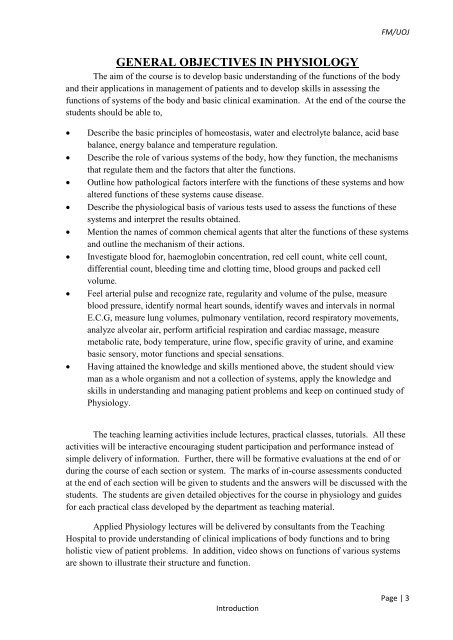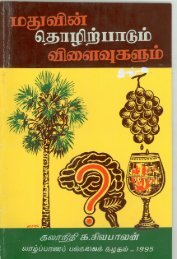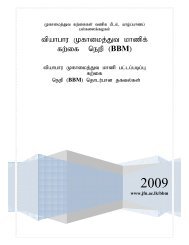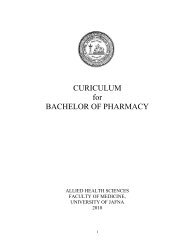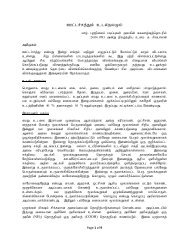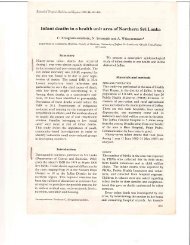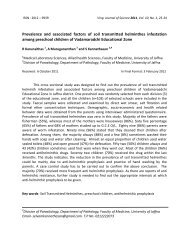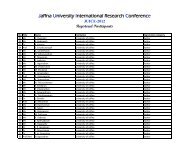MANUAL PHYSIOLOGY PRACTICAL - Repository:The Medical ...
MANUAL PHYSIOLOGY PRACTICAL - Repository:The Medical ...
MANUAL PHYSIOLOGY PRACTICAL - Repository:The Medical ...
Create successful ePaper yourself
Turn your PDF publications into a flip-book with our unique Google optimized e-Paper software.
FM/UOJ<br />
GENERAL OBJECTIVES IN <strong>PHYSIOLOGY</strong><br />
<strong>The</strong> aim of the course is to develop basic understanding of the functions of the body<br />
and their applications in management of patients and to develop skills in assessing the<br />
functions of systems of the body and basic clinical examination. At the end of the course the<br />
students should be able to,<br />
<br />
<br />
<br />
<br />
<br />
<br />
<br />
<br />
Describe the basic principles of homeostasis, water and electrolyte balance, acid base<br />
balance, energy balance and temperature regulation.<br />
Describe the role of various systems of the body, how they function, the mechanisms<br />
that regulate them and the factors that alter the functions.<br />
Outline how pathological factors interfere with the functions of these systems and how<br />
altered functions of these systems cause disease.<br />
Describe the physiological basis of various tests used to assess the functions of these<br />
systems and interpret the results obtained.<br />
Mention the names of common chemical agents that alter the functions of these systems<br />
and outline the mechanism of their actions.<br />
Investigate blood for, haemoglobin concentration, red cell count, white cell count,<br />
differential count, bleeding time and clotting time, blood groups and packed cell<br />
volume.<br />
Feel arterial pulse and recognize rate, regularity and volume of the pulse, measure<br />
blood pressure, identify normal heart sounds, identify waves and intervals in normal<br />
E.C.G, measure lung volumes, pulmonary ventilation, record respiratory movements,<br />
analyze alveolar air, perform artificial respiration and cardiac massage, measure<br />
metabolic rate, body temperature, urine flow, specific gravity of urine, and examine<br />
basic sensory, motor functions and special sensations.<br />
Having attained the knowledge and skills mentioned above, the student should view<br />
man as a whole organism and not a collection of systems, apply the knowledge and<br />
skills in understanding and managing patient problems and keep on continued study of<br />
Physiology.<br />
<strong>The</strong> teaching learning activities include lectures, practical classes, tutorials. All these<br />
activities will be interactive encouraging student participation and performance instead of<br />
simple delivery of information. Further, there will be formative evaluations at the end of or<br />
during the course of each section or system. <strong>The</strong> marks of in-course assessments conducted<br />
at the end of each section will be given to students and the answers will be discussed with the<br />
students. <strong>The</strong> students are given detailed objectives for the course in physiology and guides<br />
for each practical class developed by the department as teaching material.<br />
Applied Physiology lectures will be delivered by consultants from the Teaching<br />
Hospital to provide understanding of clinical implications of body functions and to bring<br />
holistic view of patient problems. In addition, video shows on functions of various systems<br />
are shown to illustrate their structure and function.<br />
Introduction<br />
Page | 3


